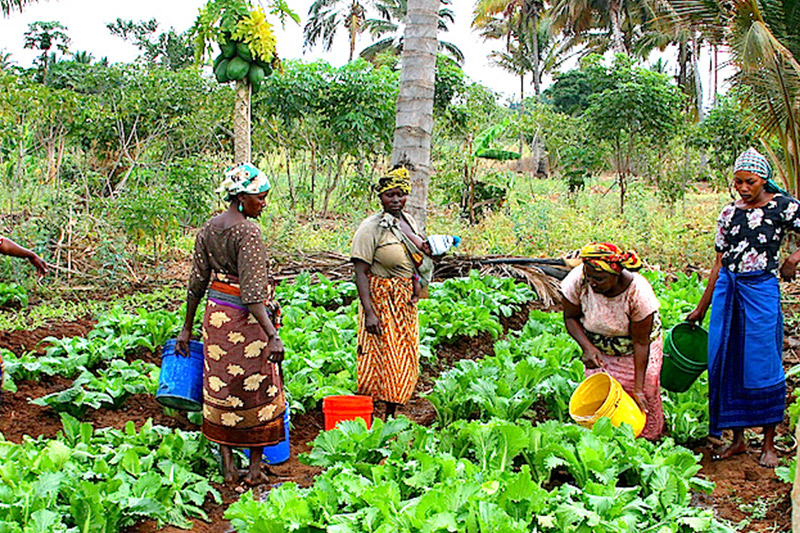According to the report, Kano State ranks the highest with about 2.4 million agricultural households followed by Kaduna State with about 2 million
Over 70 per cent of Nigerian households were estimated to be involved in agricultural activities in 2022, a survey conducted across the 36 states in the country has shown.

The survey, conducted by the National Bureau of Statistics (NBS) and published on Monday, revealed that there are about 40.2 million agricultural households in Nigeria.
The report, titled: “National Agricultural Sample Census (NASC) Report 2022”, detailed the various agricultural practices being carried out by Nigerian households across the six geopolitical zones in the country.
“In general, results from the listing exercise show that agriculture plays an important role in Nigeria, with more than 70 per cent of the households involved in agricultural activities,” the report said.
According to the report, the NASC is expected to be carried out every five to 10 years in line with standards set by the United Nations’ Food and Agriculture Organisation (FAO) for developing countries.
However, the NBS said the last round of this census was carried out in 1993/1994, adding that the main objective of the listing exercise was to collect information on agricultural activities at the household level to provide comprehensive data (list of farming households) on agricultural surveys in the country.
Findings
According to the report, Kano State ranks the highest with about 2.4 million agricultural households, followed by Kaduna State with about 2 million.
It said the least was recorded in Bayelsa State with 0.34 million agricultural households.
The report stated that about 26.7 per cent of these households have 5-6 members, while 14 per cent have just 1-2 members.
“Of the 91 per cent of agricultural households that cultivated crops, 35 per cent practised only crop cultivation while 48 per cent reported raising any livestock,” the report said.
The survey also found that 16 per cent of the households raised 58 million cattle, 41.2 per cent about 124 million goats, 42.5 per cent of poultry (most commonly chickens), while only 5 per cent practised fisheries.
It revealed that the lowest percentage of agricultural households in crop cultivation was recorded in Lagos State (48%), while Ebonyi State had the highest with 99.5 per cent.
Similarly, the report indicated that the highest percentage of agricultural households engaged in livestock production was reported in Jigawa State with 84.2 per cent, followed by Bauchi State with 79.7 per cent.
For poultry, the NBS report stated that the highest percentage of agricultural households was recorded in Benue State with 65.2 per cent and was closely followed by Ebonyi State with 63.3 per cent.
According to the report, about 16 per cent of the agricultural households in Nigeria are headed by females, while the majority (about 84 per cent) are male-headed households.
It said the survey results also showed that in some states like Anambra and Enugu, there are relatively high numbers of female-headed households (about 38%) compared to the national proportion.
“Female-headed households are more involved in fruits and nuts cultivation – about 21 per cent of them – compared to other groups of crops. In particular, about 37 per cent of female-headed households in Enugu and Anambra States reported cultivating fruits and nuts crops; followed by 36 and 34 per cent in Ebonyi and Delta States respectively,” the report said.
On the other hand, the majority of the heads of the households (about 28%) are aged 35-44 years; followed by those aged 45-54 years (25 per cent), while there are only 2.8 per cent of the heads of households aged 15-24 years.
Cultivated crops
During the listing exercise of NASC, the NBS said efforts were made to collect details on the type of crops cultivated in Nigeria within different crop categories.
Among the cereals, the report noted that maize, guinea corn and rice cultivation are reported by about 80, 40 and 37 per cent of crop-producing agricultural households, respectively.
Similarly, it said among the root/tuber crops, about 53, 40 and 24 per cent of crop-producing households reported cultivating cassava, yam and cocoyam, respectively.
Also, the report revealed that crops such as beans/cowpeas are the main leguminous crops cultivated by about 46 per cent of crop-producing agricultural households.
“Okro is the most popular vegetable crop produced by about 41 per cent of crop-producing households in Nigeria,” the report said.
According to the report, at the national level, while about 42 per cent of crop-producing households cultivate ground nuts, its cultivation is most common in Benue State, where about 81 per cent of the households reported the cultivation.
Methodology
The NBS noted that the NASC listing survey was conducted using Digitised Enumeration Area (EA) maps in all the 36 States of the Federation and the FCT.
The report noted that 40 EAs were selected and canvassed in each Local Government Area (LGA), with a varying number of EAs covered by state.
“Of the 774 LGAs in the country, 767 were fully covered; 3 were partially covered (2 in Imo State and 1 in Borno State), and 4 were not covered due to insecurity at the time of the survey (2 in Imo State and 2 in Borno State),” the report said.
The report said that 30,960 EAs were proposed to be covered nationwide but that 30,546 EAs were eventually canvassed.
Meanwhile, focus group interviews were conducted within the communities in the selected EAs to obtain more information about the residents’ perceptions of agricultural and non-agricultural activities in the community.
In his reaction to the report, Nigeria’s Minister of Agriculture and Food Security, Abubakar Kyari, described the NASC as a crucial development for Nigeria’s agricultural sector.
He said the exercise sets a new data collection and analysis benchmark that aligns with international standards.
He added that the census offers an unprecedented insight into the state and structure of agriculture across the nation, providing critical data that will inform policy decisions and strategic planning for years to come.
The minister said agriculture remains a cornerstone of Nigeria’s economy, supporting millions of livelihoods and contributing significantly to the nation’s Gross Domestic Product.
Despite this, Mr Kyari said the sector has faced numerous challenges, including outdated and insufficient data, which have hindered effective planning and resource allocation.
He said the NASC addresses this gap, offering a detailed and accurate picture of agricultural activities at the household level, which is essential for driving growth and development.
“The implementation of the NASC, using digitised Enumeration Area maps across all 36 States and the Federal Capital Territory, marks a significant technological and methodological advancement,” the minister said.
On his part, Nigeria’s Statistician-General, Adeyemi Adeniran, explained that the new report covers a broad range of data points related to agricultural households, encompassing crop production, livestock management, and fisheries activities.
“This census establishes a framework for monitoring and evaluating progress towards key agricultural indicators,” Mr Adeniran said.
He said the report and expected outputs from the National Agricultural Sample Survey will serve as a crucial resource for national agricultural planning, implementation, and policy intervention.
PREMIUM TIMES






